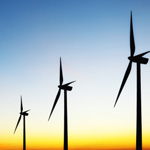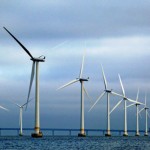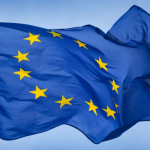New EU funding available for the growing wind power industry
 Interest in the ambitious EU research programme Horizon 2020, which begins in January and is open to different aspects of the wind power sector, continued to build last week in Brussels during a seminar organised by EWEA.
Interest in the ambitious EU research programme Horizon 2020, which begins in January and is open to different aspects of the wind power sector, continued to build last week in Brussels during a seminar organised by EWEA.
The seminar for EWEA members was held after the European Commission presented calls for projects under Horizon 2020, the European Union’s €80 billion research and innovation program. Worth more than €15 billion over the first two years, the funding is intended to help boost Europe’s knowledge-driven economy, and tackle issues that will make a difference in people’s lives.
Vilma Radvilaite, EWEA’s EU Budget and Research Advisor, said about 50 people attended the seminar which canvassed, among other things, new funding opportunities for research and development in the wind power industry.
Radvilaite said in an interview that Commission representatives explained in detail the possibilities for wind energy sector to apply for EU funding under the renewable electricity call, marine and maritime, grids, and storage.
In addition, she said, attendees learned about application procedures, financing rules, and the differences between the previous EU research programme FP7 and Horizon 2020.
Radvilaite said that the development and innovation of both onshore and offshore wind energy technology is crucial to reduce the costs of electricity, to increase the reliability of the technology and to provide to the EU a green solution to its energy challenges.
“The recently agreed Horizon 2020 program offers a budget of about €5.9 billion for non-nuclear energy projects in the next seven years,” she said. “It will be a key EU program providing financial support to wind energy technology development by 2020.”
Radvilaite added that public support for research and innovation activities will be critical in the future as wind energy is strategically important to helping the EU achieve 2020 climate goals and transform its energy market by mid-century.
EU offshore wind has a bright future, EWEA conference track chairs agree
 The next two years will be critical to further establishing and expanding the European offshore wind sector, especially in Britain and Germany, one of the track chairs at the recent offshore conference in Frankfurt said earlier this week.
The next two years will be critical to further establishing and expanding the European offshore wind sector, especially in Britain and Germany, one of the track chairs at the recent offshore conference in Frankfurt said earlier this week.
Dima Rifai, CEO of Paradigm Change Capital Partners in the UK, added a key area in the continued development of the offshore wind industry will be various ways that cost reduction can be realised across both the cost of technology and the cost of capital.
Rifai also said in an email interview that it will be interesting to see how offshore wind’s supply chain evolves and what effects local content requirements will have on the industry.
The finance track chair at the European Wind Energy Association’s Offshore conference in Germany three weeks ago, Rifai said an important message that came out of the financing sessions was that regulatory uncertainty is one of the main themes preoccupying both the industry and financial investor participants.
“We are still learning the risks in offshore wind and how to adjust for them,” she said. “As a result, there are few standardised ways to do things and each wind farm requires bespoke solutions which is an expensive way and time consuming process.”
But Rifai added that overall there is a will on the finance side to be involved in offshore wind and that many parties are studying the market seriously for an entry point.
Andrew Jamieson, CEO, Offshore Renewable Energy Catapult, UK, said there is a continuing call for political certainty across Europe especially regarding targets beyond 2020 that would give the market the confidence to scale up manufacturing.
As the track chair for the industrialising the supply chain sessions, Jamieson added that overall there was a strong sense at the conference that the offshore wind sector will indeed move forwards.
“What I [found] particularly interesting were the viewpoints of senior players starting to regard big projects as offshore power stations,” Jamieson said. “This means a lot to me in everything from how projects are thought about in design, procurement, construction and operation. It’s no longer elitist activity for wind experts but a strong industry for all power professionals.”
He also described the sector as an industry that will be here to stay and provide not just clean energy but jobs and economic value for decades.
Jesper Møller, the Head of Offshore Technologies for Siemens Wind Power, was the future technologies track chair.
Møller said that while the future of European offshore wind is bright, the sector needs to overcome cost challenges, which is tough but not impossible.
“Everybody needs to accept that this is not a high-margin industry but it is a healthy industry with many years of opportunities if we understand the need for simplifications,” he said.
“It is now clear to the industry that all players have to pitch in with cost savings on all areas. There is no chance that the turbine manufacturers can lift this challenge alone. A lot of focus on more cost-efficient foundations and simpler grid connection systems is necessary.”
Norbert Giese, Vice President of Offshore Development for REpower, was the markets, strategies and planning track chair at the recent conference.
Giese also believes that European offshore wind has a positive future.
“The main driver for the offshore wind industry during this decade will be Northwest Europe and the Baltic,” Giese said, predicting there will be additional offshore markets in the next decade.
More information about EWEA’s offshore conference and exhibition can be found here.
2030 renewables target: Germany gets on board
 The issue of 2030 renewable energy and climate targets – will we have them? How many? – has been gathering momentum in the press and media lately. The upcoming proposal from the European Commission – due out on 22 January – will be discussed by Heads of State in March or June, who will then give the European Commission the mandate to prepare the legislation, possibly including certain targets.
The issue of 2030 renewable energy and climate targets – will we have them? How many? – has been gathering momentum in the press and media lately. The upcoming proposal from the European Commission – due out on 22 January – will be discussed by Heads of State in March or June, who will then give the European Commission the mandate to prepare the legislation, possibly including certain targets.
EWEA has been calling for three targets for 2030 – for renewables, greenhouse gas emission reductions and energy efficiency – in order to give investors confidence and help the wind energy sector continue to grow, providing jobs and technology leadership, and reduce costs. Industry has also lent its support, with eight major European players co-signing a 2030 statement in November.
So one of the crucial questions in the discussion is which Member States are on board? Official supporters of a renewable energy target include Austria, Belgium, Denmark, Ireland and Portugal. They have now been joined by Germany, whose new government has now finalised its agreement on the subject.
“It is great that Germany has recognised the importance of a 2030 renewable energy target and what it can do in driving employment and growth,” commented EWEA’s Stephane Bourgeois. “It is now essential that Germany puts all its weight behind a measure that would give a massive boost to industry and the economy.”
For more information see EWEA’s 2030 webpage: http://www.ewea.org/policy-issues/legal-framework/
Hitting the jackpot with wind energy in Poland
“We feel like we’ve won the lottery.”
Mirosława and Mieczysław Horodiuk sit on a couch in their living room, their aged cat stares through the window. Here in Kończewo in north western Poland a late spring snow has fallen, delaying the spring planting for this farming family. They rest easy knowing that summer will come and they now have a guaranteed income.
10 years ago a wind energy developer approached the Horodiuk family to rent part of their farmland for a wind turbine. They were sceptical about this opportunity. It would have been difficult for them to agree if they were on their own, but they had support.
The citizens of Kobylnica had been prepared for such an event. Leszek Kuliński, mayor of Kobylnica, became interested in wind turbines while on holiday in Denmark. (His wife complained that 80% of the photographs he took were of wind turbines.) Leszek wanted to bring this industry to Kobylnica. He travelled to Germany to research and to investigate if it was safe for the community. He returned determined to make his commune attractive to wind energy developers.












